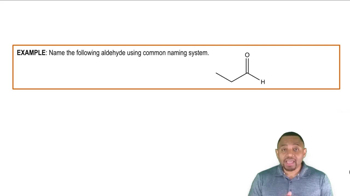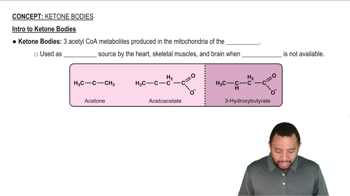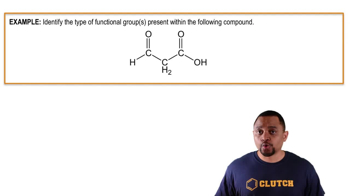Which compound in each of the following pairs would be more soluble in water? Explain.
b. propanone or 3-hexanone
 Verified step by step guidance
Verified step by step guidance Verified video answer for a similar problem:
Verified video answer for a similar problem:



 :54m
:54mMaster IUPAC Rules for Naming Aldehydes Concept 1 with a bite sized video explanation from Jules
Start learning